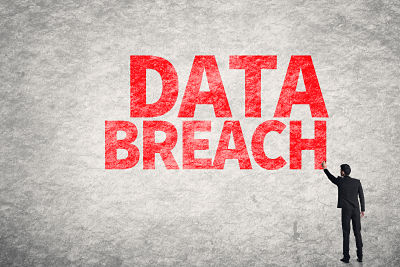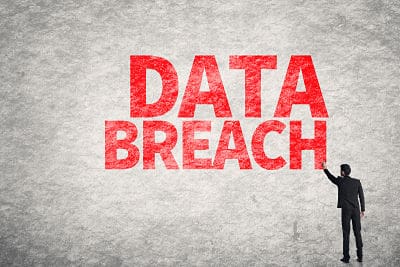By Andrew Sivertsen, CFP®
 It has been six months since we all learned about the Equifax data breach where the majority of us had our personal information (i.e., names, date of birth, social security number, driver’s license, and address) compromised. If you’re like me, you’ve probably procrastinated on doing anything about the breach. Part of me learned to live with the shock and realization that anyone could be using my information for financial gain into the unforeseeable future.
It has been six months since we all learned about the Equifax data breach where the majority of us had our personal information (i.e., names, date of birth, social security number, driver’s license, and address) compromised. If you’re like me, you’ve probably procrastinated on doing anything about the breach. Part of me learned to live with the shock and realization that anyone could be using my information for financial gain into the unforeseeable future.
For the lucky few who were not compromised by Equifax, the reality is—it is most likely just a matter of time. Several months after the Equifax debacle, my wife, Amy, received a letter from our local credit union confirming that her personal information has been breached. With our personal information all over the place, it appears such incidents are pretty much the new normal.
But don’t panic! There are still things we can do to protect and minimize damage from identity theft. Here are SEVEN things that I’ve come up with that should prove helpful.
- Safeguard your email
While big companies like Equifax, Target, and Yahoo gain all the headlines, we are still our own biggest enemies when it comes to identity theft. Make sure your email has two-factor authentication set up so that hacking into your account is far more difficult. With email, always think before you click. Is this correspondence I was expecting? Does the email address look correct? If I hover over the link and let the web address pop up, does it look like the right address for the site? Can I just go to the website directly and avoid clicking all together to confirm that the email is legitimate?
- Beware of scams and protect your information
Before giving out personal information like your name, address, date of birth, social security number, driver’s license number, or other account information, ask yourself why the company, website, or person needs that information. Know that the IRS will never call you and ask for information over the phone. If you are in doubt about the authenticity of a call, hang up and call the company back directly at their main phone number.
- Review your transaction history
Make it a routine habit to skim through the transactions on your credit card and bank account statements. For some, this might be necessary on a daily or weekly basis, but at a bare minimum review your monthly statements. From skimmers and scammers to fake online retailers, there are many different ways to nab your card numbers – so keep an eye out for fraud.
- Monitor your credit report
For the DIY folks, getting your free annual credit report from www.annualcreditreport.com can go a long way to catching ID theft early on. You can also use www.creditkarma.com to keep an eye on changes to your credit history, and watch out for new accounts in your name or hard credit inquiries that you didn’t authorize. If you would rather pay to outsource credit monitoring and restoration services, check out these web sites to find the right package of services you need: www.lifelock.com, www.idshield.com, or www.zander.com/idtheft2.
- Consider ID Theft Insurance
If you sign up for one of the paid monitoring services above, then most likely identity theft insurance is included. Otherwise, for $20-30/year, you can add an identity theft rider to your homeowner’s policy. Contact your insurance agent if you are interested in learning more about this inexpensive coverage.
- Add Social Security Protection
Go out to www.ssa.gov and establish an online account. You can set up your account there and protect your Social Security from unauthorized access even if you don’t yet need to file for benefits. The site also gives you access to your current Social Security statement so that you can review your earning record each year to keep an eye out for employment fraud.
- Freeze Your Credit
For those who want some additional peace of mind and protection, you can put a security freeze on your credit reports, which locks them and prevents anyone from being able to set up credit in your name. It can be done online, over the phone, or via mail. It’s fairly simple and takes only about 15 minutes to do.
Security freezes can be placed on your credit by going directly to Equifax, Experian, and Transunion. For those under 65, it can cost up to $10/person at each bureau, whereas it is free for those 65+. You will receive a PIN number that you should keep in a safe place (as it is a hassle to replace). You can use that PIN number to permanently remove or temporarily lift your freeze for up to 30 days. Again, the cost is the same as the initial freeze. It takes just a couple minutes to unfreeze your credit, and your authorization would be needed to open up new lines of credit or to set up new utilities or other services.
I twiddled my thumbs for too long by being afraid to commit to a data protection strategy, but I finally landed on the DIY approach. Amy and I reviewed our credit reports, then froze them and signed up for the inexpensive ID Theft option on our Homeowner’s policy for $24/year. We also set up our Social Security logins to review our earnings records annually.
This finally gave us the peace of mind of knowing that we’ve got safeguards in place to decrease the likelihood that our identities will be used fraudulently. It also put some insurance in place to help us in the restoration process should our personal data be breached. I hope this helps you to determine your best course of action and commit to a plan. Unfortunately, as we now know, burying our heads in the sand can have grave consequences.
 Andrew Sivertsen, CFP®, is a Sr. Financial Planner in the Quad Cities office of The Planning Center, a fee-only financial planning and wealth management firm. Email him at: andrew@theplanningcenter.com.
Andrew Sivertsen, CFP®, is a Sr. Financial Planner in the Quad Cities office of The Planning Center, a fee-only financial planning and wealth management firm. Email him at: andrew@theplanningcenter.com.






